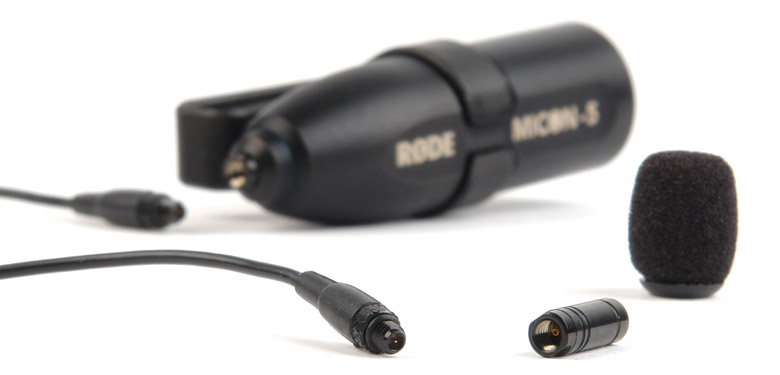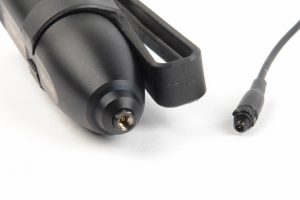How can you tell if someone is a Rode lav owner? They are the ones who don’t run frantically toward the mic when the actor starts to pull it off themselves.
We didn’t need another lavalier microphone. The lavs we’ve been using for years sound amazingly natural and are very reliable. We’ve learned to hide them under clothing pretty well, and some are so small they can barely be seen. So when Rode decided to enter the lav mic market, they designed a high quality professional lavalier microphone in a familiar form, but added some important and unique features that we do need, and at a very likeable price.
The Rode lav mic is, for all practical purposes, the same size and shape as one of the most commonly used and highly regarded microphones in the industry, which, like other lavs, becomes forever useless when the cable is damaged at or near the head. It’s always been frustrating to throw away an otherwise perfectly good multi-hundred dollar microphone just because the cable got yanked. Even if you’re lucky and the cable damage is at the connector end (repairable), you’re still looking at downtime at a service shop for the repair. Rode’s lav mic and MiCon connector system solves these common and expensive problems.
With the Rode lav, if the cable is damaged at the head (or anywhere else for that matter) it can be repaired by a novice in about six seconds. Simply screw the head and connectors onto new cable. Done — for the minimal price of a new cable. (RODE MiCon Cable 4′ or RODE MiCon Cable 10′) The microphone element (the business end, also called the “head”) screws onto its cable with a sub-miniature connector. The other end of the cable screws onto the adapter of your choice, depending on what you intend to plug it in to. When all put together, the breakaway connections are nearly invisible. Adapters for the Rode lav are available in a variety of connector types, including the common TA5 for Lectrosonics transmitters and XLR for standard phantom powered inputs.
How does it sound? The output level of the Rode lav is nearly identical to the standard sensitivity of the most commonly used lavs, and my casual listening tests suggest that the noise level is, at the very least, the same as or close enough to the accepted standards. Like most lav mics, there is a high frequency boost in anticipation of being located under the chin on the chest and sometimes under clothing. Rode chose a shelf type high frequency boost that starts around 2kHz, rising by about 4dB at 10kHz and stays there. This is definitely an improvement over a flat response, but be aware that this high frequency boost may differ from other mics you may already have. For example, the familiar Sanken COS-11 has a peak type boost between 3kHz and 10kHz (=5dB@5kHz), then drops back down to flat over 10kHz. So, the Rode may have a little more high-end sizzle, while the Sanken may be a little brighter in the upper midrange. A small difference, for sure, but in my headphones the difference in curves was apparent before I saw the graph. In truth, the ideal response curve of a lavaliere mic is a moving target that changes with actors and their wardrobe (which is what some of those knobs are for on our mixers).
In addition to the replaceable cable, the Rode lav comes in a small, transparent waterproof case (looks just like an OtterBox) with some nice accessories. Even the included windscreens are well done. One is a furry type (for high wind) and the other a foam tear drop. The foam tear drop wind screen is a hollow design which is much more effective than solid foam. Both windscreens have a positive rubber grip to keep it on the microphone.
So the main difference with the Rode lav – and it’s an important difference – is that the cable is replaceable and inexpensive to replace. Those who go with this microphone (and there will be many) will gladly keep a couple of spare cables in their kit.
One comment
Leave a reply Delete Message
You must be logged in to post a comment.


 US
US  Canada
Canada 






Good morning, having just managed to wash my COS 11, but yet finding out if it will work again, though anticipating it is no longer its former self, and being a RODE man, how much is the Rode Lav with TA5, and I guess, a spare cable?
Ta
Bb